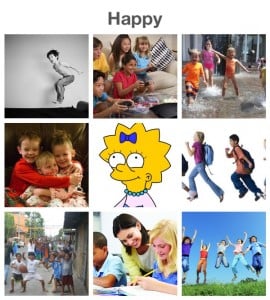Red Rabbit from Egmont Mayer on Vimeo.
The room is set up with chairs in clusters of 4, with some facing the screen and some facing away from the screen. The guest lecturer is standing in the room as the Dialog language teachers start entering the room. Within seconds they have started moving the chairs into rows and there is little that can be done to stop them. They are expecting a lecture and are deaf to the pleas to leave the chairs as they are. Learning point – tell participants before they enter the room that they are not to move the seats, as they have been arranged in a specific formation, for a reason.
Leo Selivan, of Leoxicon, is ready to start but is struggling to be heard over the noise of 55 teachers chattering excitedly in 10 languages. Suddenly the room is silent and Leo has their attention. Leo opens the session with a discussion around the use of videos in the classroom, with a particular focus on the possibilities of generating language from silent movies. The teachers are interested but not yet convinced. Leo asks the teachers to organise themselves into language groups of up to four per group, with one person per group facing the screen and the others with their backs to the screen. The task is for the ‘watchers’ to describe what they see on the screen, while the other members of the group listen carefully and try to understand the plot unfolding, on the screen that they can’t see. After 2:46 minutes Leo stops the movie and asks the teachers to swap places, the ‘watchers’ are now the ‘listeners’, and the ‘ listeners’ are now the ‘watchers’. The narrative continues…
As the teachers listened, described, questioned, gestured and laughed aloud, I wondered around the room enraptured by the cacophony of languages being heard. This was organised chaos, and it was exciting. The descriptions of the ‘Red Rabbit’ that I could identify in so many languages, including Spanish, German, Hebrew, Arabic, Russian, Italian, French and English was akin to what I imagine it might be like at the United Nations. As I looked across the room I was clearly aware that the teachers were engaged and on task. The scene created was reminiscent of the story of the Tower of Babel, though this time the tower was the Red Rabbit, and the goal was to generate language rather than reach the heavens.
Four months later and the activity has been tried in a number of Dialog classes in multiple languages. An English teacher reported that one student in a pre-intermediate class was so excited by the experience, and refused to let his language limit his narrative, that as he gestured wildly he shouted; “Oh it is a big, big rabbit. It is a Rabbit Rabbit!”(Doubling a word in Hebrew, is a common way of emphasising something.) A Spanish teacher used the activity with her pre-intermediate class, and stated that though her students really enjoyed the activity they were frustrated by their limited vocabulary, she told me that she now realises that she should have pre-taught the requisite vocabulary. Reflection par excellence!
As English teachers you’re probably not trying to create the Tower of Babel but I strongly suggest using this activity, and the others Leo shares in his blog, “Not a word was spoken (but many were learned), with your learners for a fun, interactive and challenging learning experience.




